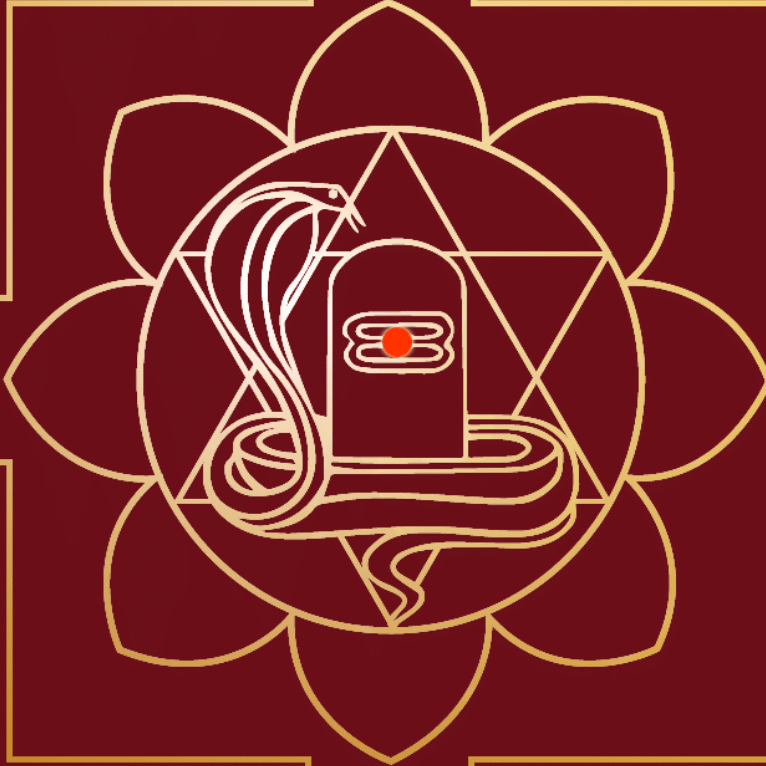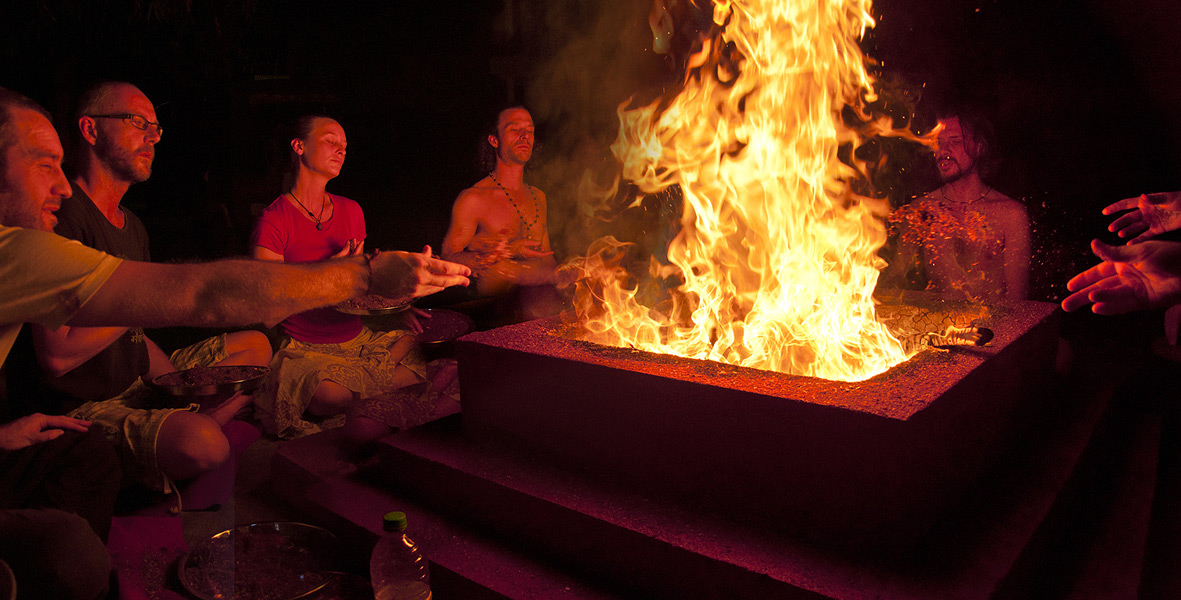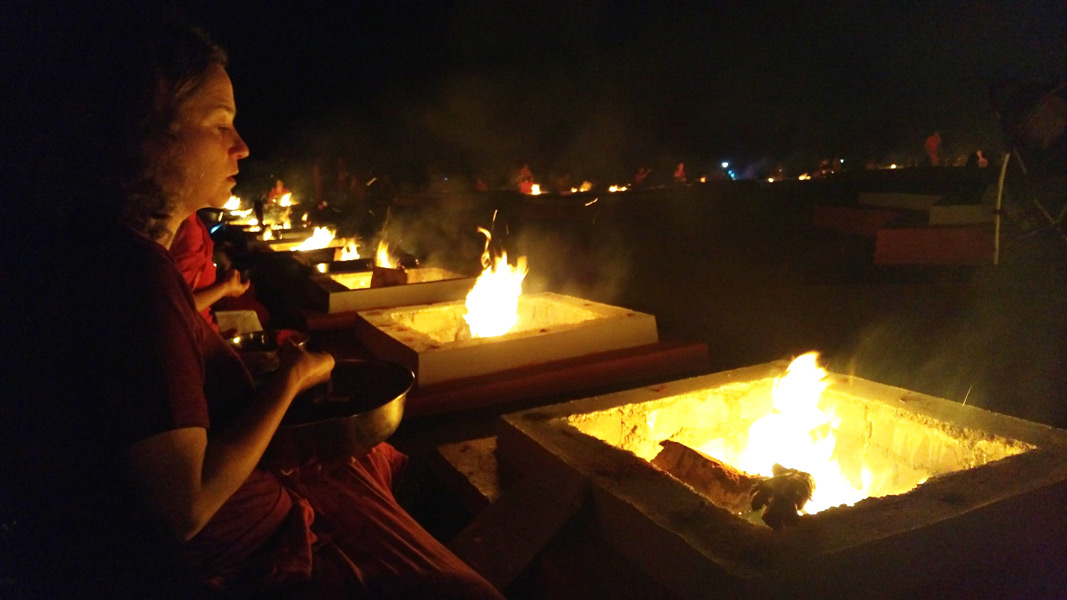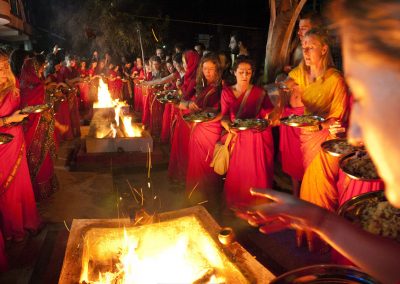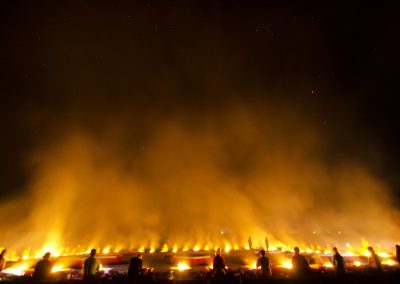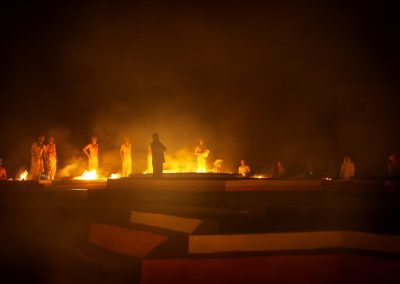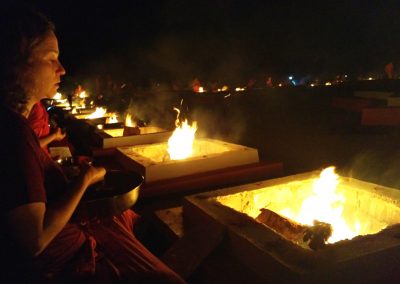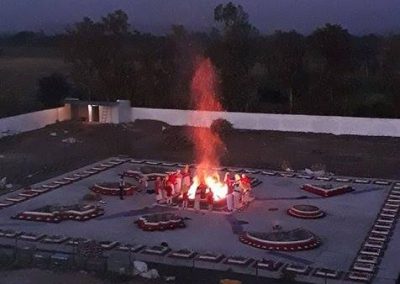PASHUPATI MAHA MANDAL YAGNA SHALA
The Pashupati Maha Mandal Yagna Shala was constructed in 2016. Its configuration and design were determined by the constitution of cosmic energies in the universe. Using many special tantric processes and techniques, our Guruji Maharaj created the yagna shala in the form of a mandala and imbued it with life force (made it “Siddha”) by performing the prana pratishta of different energies and dimensions within the universe, with the central source of energy being Lord Shiva.
The yagna shala received the name “Pashupati Maha Mandal” because it is one of the many names of Lord Shiva (others include Adipurush, Adiyogi, Adiguru and Adinath). Shiva is our main source of energy. We all are particles of Shiva. Indeed, every living and non-living element in this universe is an expression of Shiva. “Pashupatinath” specifically means “lord of animals” or “protector and caretaker of animals,” which encompasses multiple types of living beings that are present in universe, including: “Andaj” (oviparous, or one who is born by eggs), “Pindaj” (viviparous, or one who is born directly), “Swedaj” (micro-organisms who do not have a complete body) and “Udbeej” (one who is born by seeds).
The yagna shala consists of three entrances, a total of 73 yagna kunds (64 yogini kunds, eight shakti kunds, and one samadhi kund) and three yantras (the “Kailash yantra,” “Shri Yantra,” and “Trigunatmak Yantra”). All of the yagna kunds are interconnected by copper wiring that runs underground, and the samadhi kund separately is connected to the Rajrajeshwari Shiva Lingam in the temple by a “Pancha Dhatu” wire (an alloy of gold, silver, copper, iron, and zinc).
There are three levels to the yagna shala, which correspond to the three yogic qualities (gunas) of tamas, rajas and sattva. The first level, comprised of the circle of 64 yogini kunds, is tamasik. The second level, made up of the circle of eight shakti kunds, is rajasik. The Samadhi Kund makes up the third and final level, which is satvik.
